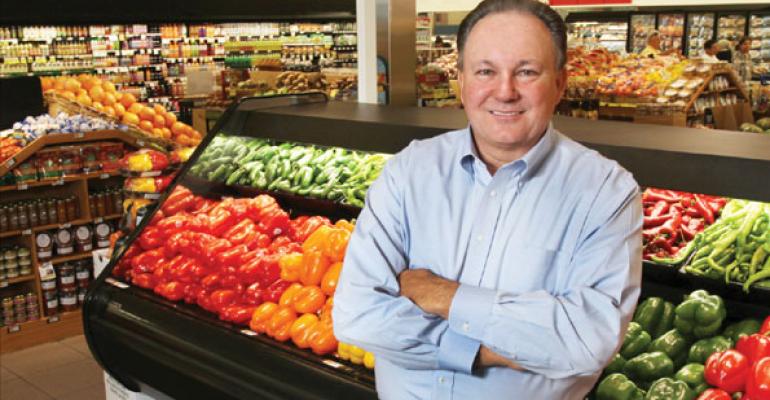They’re separated by less than 10 miles and the Hudson River, but nobody would confuse Bergenfield, N.J., and Harlem, N.Y. — unless, that is, you happened to be in a Pathmark store.
These communities on either side of the George Washington Bridge — one a leafy, middle-class, largely Jewish suburb, and the other a dense, multi-ethnic, largely poor community in the heart of a city — cast vastly different shadows, but until very recently had Pathmark stores in each community with virtually identical product selections and adjacencies. The stores had another few things in common as well: Sales were plummeting, service was inconsistent, the buildings were aging and their parent company was bankrupt.
 To Sam Martin, the chief executive officer of Pathmark parent A&P, these problems stemmed not just from a lack of investment but from a lack of imagination. Now having steered the Montvale, N.J., company out of a 15-month stay in Chapter 11, he intends to address those problems by making sure each of the chain’s 320 stores is cleaned up and modernized, and reflects the unique character of the neighborhood in which it resides, no matter what the banner.
To Sam Martin, the chief executive officer of Pathmark parent A&P, these problems stemmed not just from a lack of investment but from a lack of imagination. Now having steered the Montvale, N.J., company out of a 15-month stay in Chapter 11, he intends to address those problems by making sure each of the chain’s 320 stores is cleaned up and modernized, and reflects the unique character of the neighborhood in which it resides, no matter what the banner.
“The footprint we have, the New York, New Jersey, Philadelphia corridor, has the most densely populated, most diversely populated, neighborhoods in the country — and maybe the world,” Martin told SN in a recent interview. “The opportunity for a successful food and drug retailer is to resonate with those people in each neighborhood. It’s not one-size-fits-all. It doesn’t work that way anymore.”
Pa. Pathmarks Not for Sale: A&P
Martin, who joined A&P two years ago, has made neighborhood marketing an overarching focus of a program to invest in store remodels to boost sales and cast a new image for A&P, the iconic supermarket brand that at one time was the nation’s largest and most successful company but has been declining at various velocities for the better part of the last 50 years.
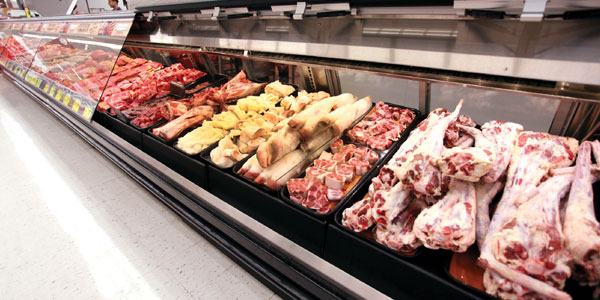
Efforts to renew the store base by neighborhood are already making a difference in places like Bergenfield, where a Pathmark renovation and remerchandising effort helped to triple the number of kosher products inside including meat, deli and seafood selections, and employs a certified Mashgiach. A few exits south on the New Jersey Turnpike, a Weehawken Pathmark (above) has been remade in the image of its Hispanic neighborhood, with selections appealing to shoppers there, including a spectacular 36-foot service meat counter offering custom cuts and more than 20 varieties of fresh and smoked offal, including fresh beef hearts, oxtails, mutton and pig ears.
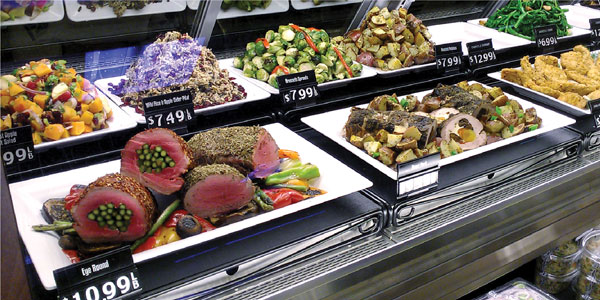
Similar efforts are under way throughout A&P’s market areas, including Food Emporium stores (above) in Manhattan, Waldbaums on Long Island, SuperFresh stores in Philadelphia and A&P in New Jersey. Martin said around 24 stores would see renovations this year as part of a plan to renew “the majority” of the company’s 300 stores over the next five years.
“The idea is that each store should be what each neighborhood is about,” Martin said. “If you think of the Northeast, it’s dense, it’s diverse, and you’ve got to be able to respond to that diversity, but it’s also filled with neighborhoods that have a very strong identity.”
Yucaipa Connection
Martin is a retailing veteran who took the reins at A&P at an especially tumultuous moment in its history. Including interim leaders, he was the fourth CEO at the company in 10 months, and his arrival followed investor Ron Burkle’s increased influence in the company. Burkle, whose Yucaipa Cos. gained a stake in A&P when it acquired Pathmark in 2007, gained a greater share of A&P with a 2009 equity investment, and eventually bought the company out of bankruptcy court. Burkle today is A&P’s chairman.
 A&P from 1979 until its 2010 bankruptcy filing was majority owned by German retailer Tengelmann Group.
A&P from 1979 until its 2010 bankruptcy filing was majority owned by German retailer Tengelmann Group.
Martin had previously worked for companies with a Yucaipa connection, including Wild Oats Markets, where he was senior vice president of operations, and Fred Meyer. (Martin through an A&P spokeswoman declined to address his relationship with Burkle with SN.)
Before joining A&P, Martin had been chief operating officer at OfficeMax. He also has executive experience with ShopKo stores and Toys “R” Us. Born in Virginia to a military family, Martin grew up and attended college in the Pacific Northwest, and began his career at Fred Meyer, where he spent 24 years.
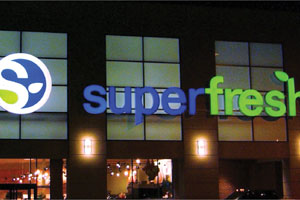 Martin had only begun work on a five-point turnaround plan for A&P when the company filed for Chapter 11 protection in December of 2010, seeking relief from high operating costs, mounting debts and a sales drain exacerbated by chaos in the home office.
Martin had only begun work on a five-point turnaround plan for A&P when the company filed for Chapter 11 protection in December of 2010, seeking relief from high operating costs, mounting debts and a sales drain exacerbated by chaos in the home office.
“Nothing was easy in bankruptcy,” Martin said, but he acknowledged the process provided tools that helped A&P cut millions in annual expenses ranging from dark and unprofitable store leases to an unfavorable trucking deal to high union labor costs. Around 25% of the company’s total stores were closed during bankruptcy as the company unveiled a new store footprint concentrated in metro New York and Philadelphia.
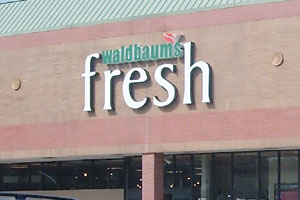 “Our bankruptcy was well-managed,” Martin said. “We were fortunate to have a good team including Jake Brace, the chief restructuring officer, who had been through a similar situation with United Airlines. We had terrific professional help, and we had a consistent view of what was needed to turn the company around. And I believe if you have a good plan, you will have a better outcome.
“Our bankruptcy was well-managed,” Martin said. “We were fortunate to have a good team including Jake Brace, the chief restructuring officer, who had been through a similar situation with United Airlines. We had terrific professional help, and we had a consistent view of what was needed to turn the company around. And I believe if you have a good plan, you will have a better outcome.
“For us, the important thing was that our constituents agreed we had an iconic brand, well-positioned in the Northeast in terms of locations, and well-respected for more than 150 years,” he added. “And everybody — the vendors, the creditors, the note-holder, the supply guys — everybody wanted this company to survive. They knew they were better off with an A&P in business than out of business. That allowed us to get to the right place.”
 For Martin, the operational turnaround continued amid the financial restructuring. The bankruptcy process helped the company tackle two points of the five-point plan — enhancing liquidity and reducing structural and operating costs. A management team hired by Martin — many coming from the ranks at OfficeMax — satisfied the first objective of the plan.
For Martin, the operational turnaround continued amid the financial restructuring. The bankruptcy process helped the company tackle two points of the five-point plan — enhancing liquidity and reducing structural and operating costs. A management team hired by Martin — many coming from the ranks at OfficeMax — satisfied the first objective of the plan.
Points four and five — improving the value proposition and enhancing the customer experience in stores — are the focus today.
“We didn’t need bankruptcy for those things, but we’ve still made a lot of progress,” Martin contends. “Stores are cleaner, and our in-stock position is better than it’s been for as far back as we have measurements. We have a better quality of products in our stores and we’re working hard on service standards for associates.”
Exclusive Offerings
A&P is bolstering its product quality behind private labels and exclusive offerings in its perishable departments. Last year it launched Woodson & James, a line of Angus beef products sourced from a single supplier, Kansas City, Mo.-based National Beef. The company last month expanded the line with specialty barbecue products and frankfurters.
Mid-Atlantic Country Farms is a specialty beef, chicken and turkey product line sourced from 140 family farms on the East Coast, also launched a year ago. Products from this line are humanely raised and sustainably farmed, A&P said.
A&P Expands Private-Label Angus Beef
A&P Forms Partnership With BrightFarms
Last month the company announced a partnership with BrightFarms to be the exclusive retailer of tomatoes, lettuce and herbs to be grown atop what BrightFarms is calling the world’s largest rooftop farm in Brooklyn. This offering will provide lower cost, healthier options for shoppers and further support A&P’s efforts to resonate with local shoppers.
The approach to tailor each store to its neighborhood represents a bit of a shift from a previous focus at A&P to craft store brands that were sharply defined. Under the previous regimes, Pathmark stores were positioned as a “price impact” banner; A&P, Waldbaums and SuperFresh aimed for a more upscale “fresh” positioning and Food Emporium took on a “gourmet” positioning. The company was careful not to advertise them together. “It was almost as if they were competitors,” Martin said.
New CEO Martin Starring in Ad Campaign
A new series of ads for A&P stars Martin himself and sells the idea that the brand is “better” — a theme Winn-Dixie used after its emergence from Chapter 11 — encompasses all of A&P’s store brands for the first time. The tag line also echoes a companywide heath and wellness effort in HBA and pharmacy known as “Live Better.”
“We’re in your neighborhood, and we want to do what you want us to do,” Martin explained of the new focus. “I don’t really care what the banner on the store says. The banners over time have become what they are. We’re not going to abandon the intrinsic value that a banner brings to a store, we’re going to build on it. But the idea that we don’t want an A&P shopper to shop at Pathmark is crazy, in my mind. Why wouldn’t I want it? I want them to shop where they’re comfortable going.”
Martin is convinced there is ample opportunity to differentiate stores based on neighborhood preferences. In Weehawken, the extensive renovation and new focus on Hispanic shoppers came about after officials studied the market and the competition and its own shopping data.
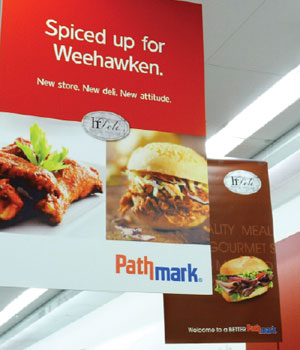 “We spent time with associates who work here and we spent time in the community talking to shoppers,” he explained. “We looked heavily at the local competition, the bodegas in town, finding out where people bought their food. We went to restaurants in town. We married that up with local and national data and decided not only from demographic standpoint, but most importantly, from a food and behavioral shopping standpoint, that this was definitely a highly Hispanic market.”
“We spent time with associates who work here and we spent time in the community talking to shoppers,” he explained. “We looked heavily at the local competition, the bodegas in town, finding out where people bought their food. We went to restaurants in town. We married that up with local and national data and decided not only from demographic standpoint, but most importantly, from a food and behavioral shopping standpoint, that this was definitely a highly Hispanic market.”
The selections at Weehawken reflect the new focus, as do bilingual signs — and employees. Signs including the word “Weehawken” appear more often and more prominently than the word “Pathmark” does, which is no mistake, Martin noted. But perhaps what speaks loudest is a giant bin of plantains at five for $1 at the entrance to an expanded produce department.
“You have to have some consistency from store to store but in my mind that consistency is only 60% or 70% of the products you sell,” Martin said. “You have another 20% or 25% that you really have to customize to the neighborhood and 5% to 10% for new and exciting things the market is coming forward with. So while your assortment is 70% consistently the same for each store, 20% certainly needs to be different. And you can make a nice difference with 20% of your assortment, especially if you lay it out right.”
Reviving the Store Base
Martin places a strong focus on repairing assortment and store layout, believing the company “lost its sense of adjacency” over the years. He also thinks A&P let its stores grow far too old, noting its average store has gone 15 years without a renovation. A tired store base, he said, is at the heart of its sales decline and has the effect of blunting progress in other areas.
“If you have stores that haven’t been touched in 15 years, just go back and look at all that’s happened in those 15 years. You’ve had the growth of ShopRite and Stop & Shop, the influx of Wal-Mart and Target — all new buildings and all new facilities,” he said. “If you’re trying to compete with that with a 15-year-old Pathmark, you’re out of the running.
“Food is a very personal shopping experience,” he added. “It needs to be clean, it needs to be in-stock, you need to have great service. And you are unable to do that in old, tired buildings.”

Sales at the Weehawken Pathmark are up by more than 20% since the renewal was complete, resulting mainly from increased customer count but also small improvements in basket size and price per item. “If I could do this at every store, I’d be very happy,” Martin said.
But he’s aware there is much work ahead. Rosy sales projections in the retailer’s disclosure statement aren’t likely to be met until more renovations are complete, Martin said. (Papers filed in Bankruptcy Court projected sales of $7.1 billion and a 2.2% comparable-store sales increase for the fiscal year beginning in late February, although that projection was based on 335 stores. Martin through a spokeswoman declined to update those projections in detail.)
“We have a lot of work to do,” he said. “Emerging from bankruptcy was just a start and we have to build from that. Although we’ve done remodels in 10 or 15 stores we still have well over 300 that haven’t been touched. While we’ve changed and fixed some categories and added to our ability to deliver fresh products with our new lines and new delis, we still haven’t touched every store so this year our base sales is going to be challenging. Until we can get more critical mass behind stores that have been touched, and until you’ve had a chance to change all of your adjacencies your category work only goes so far.”

